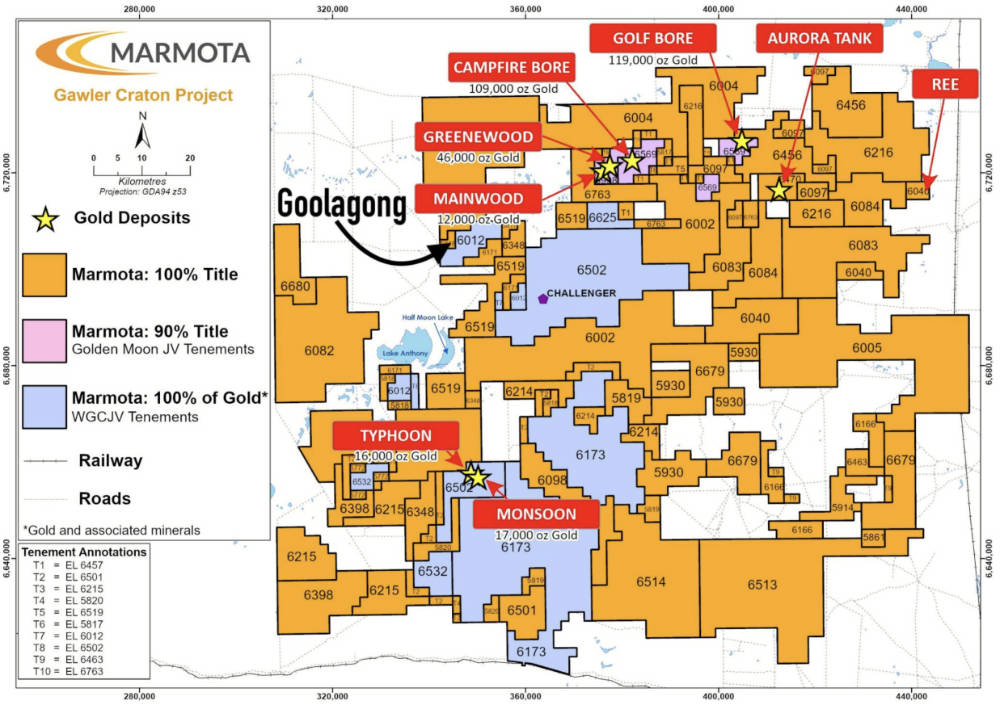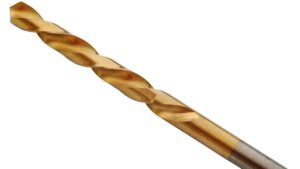Marmota’s luck shines bright as drilling strikes gold at Goolagong

Marmota’s drilling has uncovered a potential gold discovery at Goolagong. Pic: Getty Images.
- Marmota makes potential new gold discovery at the Goolagong target in South Australia
- Hole 23MT184 returned an intersection of 2m at 0.64g/t gold
- Gold grades increase at depth until hole refusal at 38m due to hard rock
- Larger, more capable RC rig to be mobilised to better test the new find
Special Report: A combination of good fortune and exploration knowhow have led Marmota to uncover a potential new gold discovery at the previously undrilled Goolagong target, part of its Gawler Craton project in South Australia.
Goolagong sits 20km northwest of the Challenger gold mine that produced over 1 million of ounces of gold, and 35km from Marmota’s (ASX:MEU) 90%-owned Greenewood and Mainwood gold deposits.
MEU’s Gawler Craton project also hosts the advanced Aurora Tank project that features multiple bonanza grade gold intersections close to surface.
The northeast striking Goolagong gold anomaly covers an area of 800m by 200m and is coincident with a linear magnetic high.
The target had never never been drilled before, and the company tested it as part of its Project X regional reconnaissance program across its +10,000km2 tenement package.
This same program had also intersected clay-hosted rare earths at the Manna from Heaven prospect with 4m composite intersections of up to 2104ppm total rare earth oxides and multiple +1000ppm TREO intersections made over a zone extending 2.8km from south to north, and up to 2.8km east to west.

The Goolagong target within the Gawler Craton project. Pic: Marmota
Checking all the right boxes
At Goolagong, hole 23MR184 returned a 2m intersection grading 0.64g/t gold just before refusal at a depth of 38m (the point where harder rock was reached beyond which the AC rig could not drill).
Importantly for the company, mineralisation was found to increase at depth, going from 0.53g/t gold from 36-37m to 0.75g/t gold from 37-38m.
Highlighting just how fortuitous the discovery was, all of the adjacent holes stopped even closer to surface (also due to refusal), typically at around 23m or 29m, with MEU suggesting that the deeper weathering at 23MR183 is due to a fracture system conducive to the increased flow of meteoric waters.
“Goolagong already has all the attributes of being a potential new gold discovery, with gold grades increasing downhole, reproducible across 4m composites and 1m splits, and which only stopped due to hitting refusal with the recon AC rig,” chairman Dr Colin Rose said.
“It also highlights the degree of luck in exploration: if the hole had been drilled 2m shorter, this could have been so easily missed.”
Next steps
Rose said that MEU will bring in a larger reverse circulation (RC) rig to drill deeper, to drill adjacent holes and to identify which direction the mineralisation heads in.
“We would love to have this work done as soon as possible, most likely in conjunction with the large gold RC program being prepared at Campfire Bore,” he added.
This article was developed in collaboration with Marmota, a Stockhead advertiser at the time of publishing.
This article does not constitute financial product advice. You should consider obtaining independent advice before making any financial decisions.
Related Topics

UNLOCK INSIGHTS
Discover the untold stories of emerging ASX stocks.
Daily news and expert analysis, it's free to subscribe.
By proceeding, you confirm you understand that we handle personal information in accordance with our Privacy Policy.








